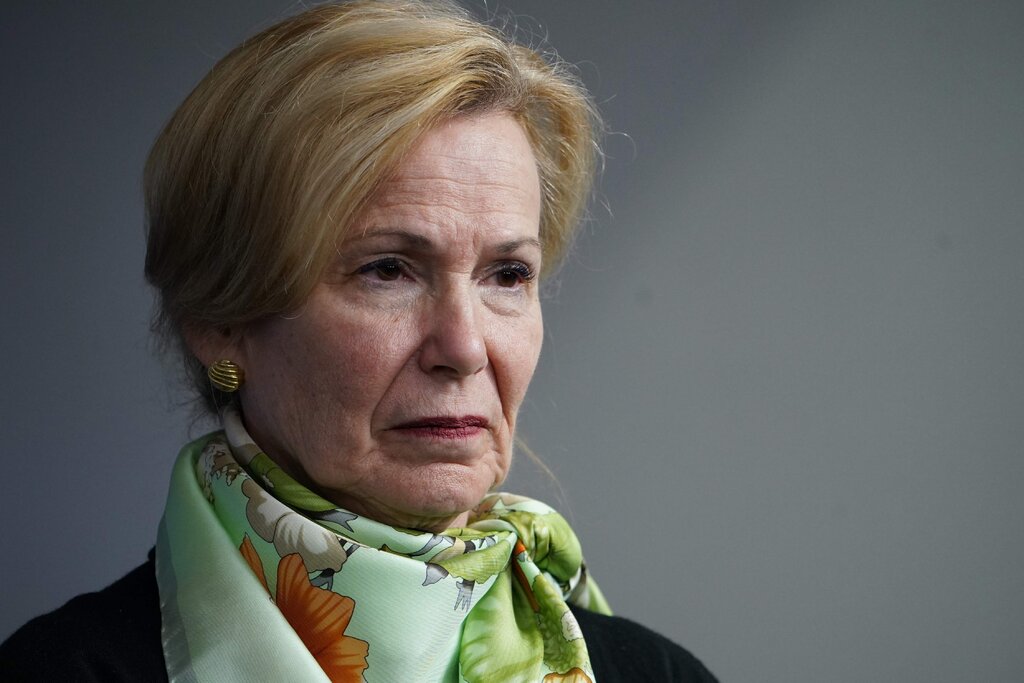False Reports of a New ‘U.S. Variant’ Came From White House Task Force
Reports of a highly contagious new variant, published on Friday by multiple news outlets, were based on speculative statements made by Dr. Deborah Birx.
Published Jan. 8, 2021 Updated Jan. 9, 2021, 9:20 a.m. ET
Reports of a highly contagious new coronavirus variant in the United States, published on Friday by multiple news outlets, are based on speculative statements made by Dr. Deborah Birx and are inaccurate, according to several government officials.
The erroneous report originated at a recent meeting where Dr. Birx, a member of the White House coronavirus task force, presented graphs of the escalating cases in the country. She suggested to other members of the task force that a new, more transmissible variant originating in the United States might explain the surge, as another variant did in Britain.
Her hypothesis made it into a weekly report sent to state governors. “This fall/winter surge has been at nearly twice the rate of rise of cases as the spring and summer surges. This acceleration suggests there may be a USA variant that has evolved here, in addition to the UK variant that is already spreading in our communities and may be 50% more transmissible,” the report read. “Aggressive mitigation must be used to match a more aggressive virus.”
Dismayed, officials at the Centers for Disease Control and Prevention tried to have the speculative statements removed but were unsuccessful, according to three people familiar with the events.
Agency scientists did not agree with her assessment, according to one frustrated C.D.C. official, speaking on condition of anonymity for fear of retaliation.
Dr. Birx could not immediately be reached for comment.
The news of a possible new variant first appeared Friday afternoon on CNN, and quickly spread to other outlets. Responding to media inquiries about the variant, the C.D.C. issued a formal statement refuting the theory.
“Researchers at the Centers for Disease Control and Prevention are monitoring all emerging variants of the coronavirus, including in 5,700 samples collected in November and December,” according to Jason McDonald, a spokesman for the agency.
“To date, neither researchers nor analysts at C.D.C. have seen the emergence of a particular variant in the United States,” he said.
Among the variants circulating in the United States is B.1.1.7, first identified in Britain and now driving a surge and overwhelming hospitals there. The variant has been spotted in a handful of states, but the C.D.C. estimates that it accounts for less than 0.5 percent of cases in the country so far.
Another variant circulating at low levels in the United States, known as B 1.346, contains a deletion that is also present in B.1.1.7. “But I have seen nothing on increased transmission,” said Michael Worobey, an evolutionary biologist at the University of Arizona who discovered that variant.
That variant has been in the United States for three months and also accounts for fewer than 0.5 percent of cases, so it is unlikely to be more contagious than other variants, according to a C.D.C. scientist who spoke on condition of anonymity because he was not authorized to discuss the matter.
All viruses evolve, and the coronavirus is no different. “Based on scientific understanding of viruses, it is highly likely there are many variants evolving simultaneously across the globe,” Mr. McDonald, of the C.D.C., said. “However, it could take weeks or months to identify if there is a single variant of the virus that causes Covid-19 fueling the surge in the United States similar to the surge in the United Kingdom.”
Carl Zimmer contributed reporting from New Haven, Conn., and Noah Weiland from Washington.
An earlier version of this article misidentified the news outlet that first published the report of a possible new variant. It was CNN, not CNBC.


